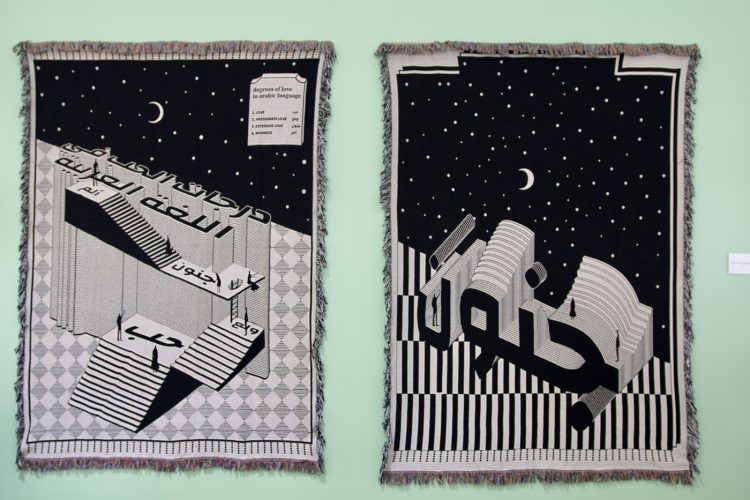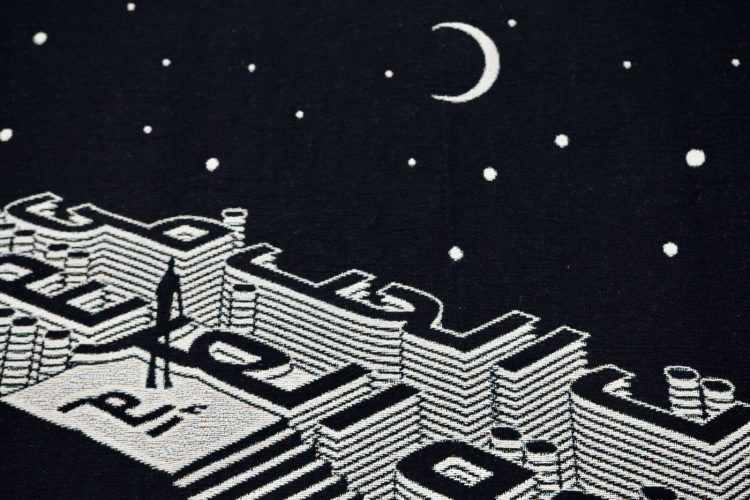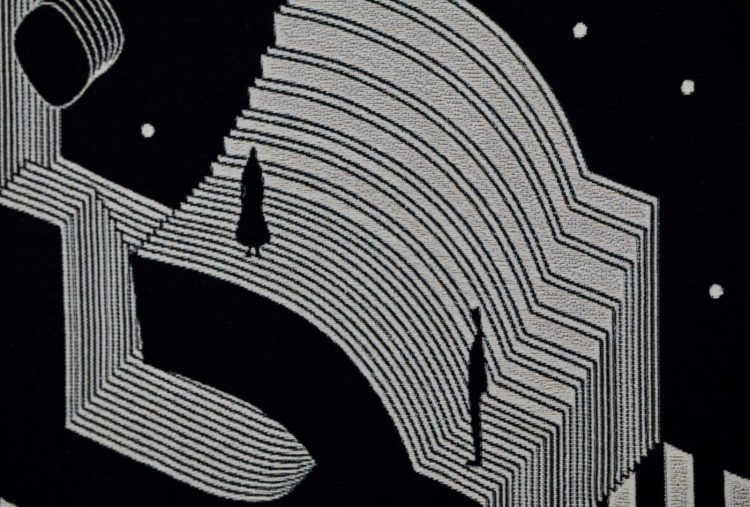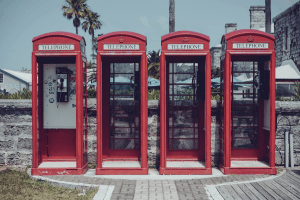A conversation with Zena Adhami, the designer and graphic artist
“According to Dr. Fatima Mernissi, sociologist and writer and one of the most prominent Islamic feminists, there are over 50 words for Love in Arabic”, states Zena Adhami, the designer and graphic artist behind the touching artwork “Degrees of Love in Arabic Language, to ADF Web Magazine.
The work presented this November during the year’s edition of Dubai Design Week consists of two hanging rugs toned in black and white (in Arabic songs love is mainly expressed at night), whose concept is inspired by the stages and various intensities of the emotion: Love, Passionate Love, Excessive Love and Madness.
With the use of computer-generated images, she started building the “steps” through which the figures climb.
The artwork is founded on the Arabian language speaking, one of the richest languages in the world, which is investigated both in the variety that offers to the speakers as in the form of the Arabic letter itself.
I had the chance to exchange a few words with Zena for deepening her inspiration which is invested in the research of meanings.
As a lens on things, she explains connections using the instruments of visual art.
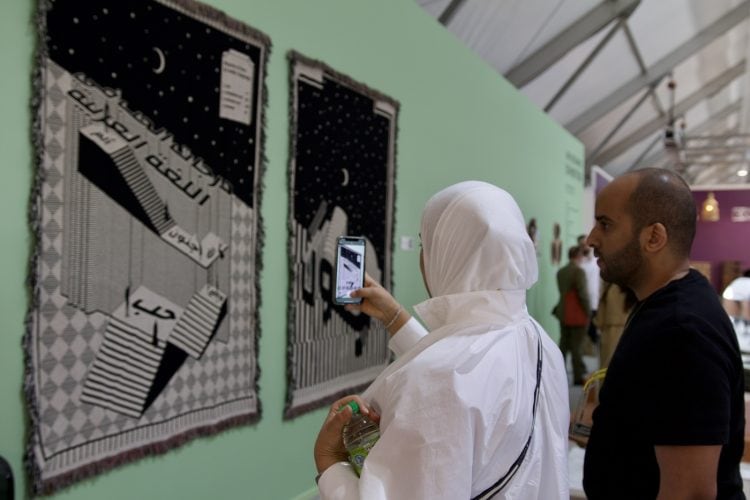
Degrees of Love in Arabic Language exhibited at UAE Designer Exhibition, Dubai Design Week, November 2022.
V.A. I came across your project, “Degrees of Love in Arabic Language” after it was featured in UAE Designer Exhibition. It is fascinating to deepen a work such as this, which aims to spread awareness about love as a multifaceted topic, especially during interesting times like those we live in.
Through this moving project, you have condensed an impalpable phenomenon and enclosed it within a graphic restitution. How do you come up with this?
Z.A. In “Degrees of Love in Arabic Language”, I wanted to explore the complexities of emotion and type in the Arabic language by zooming in on the meanings of the word "love". According to Dr. Fatima Mernissi, sociologist and writer and one of the most prominent Islamic feminists, there are over 50 words for Love in Arabic.
The work is a compelling collection of rugs that represent contemporary graphic design in an interior design setting. The work aims to explore the "encounters" between our bodies, art, and language in transformative ways of interior and intimate domestic spaces. The work also investigates ways of how we can learn when language is built, not written.
I really wanted to look at the Arabic language not just a vehicle for conveying meaning, but as a thing.
Using design as a departure point, I explored the tension between meaning, weaving, and touch in this body of work by producing these previously-2D works into intimate carpets that adorn visitors' feet inside domestic spaces.
With regard to my practice, I center it on exploring and investigating our world through the lenses of Place, Space, and Memory. I continually return to the relationship between how we define place and how it defines us. Our understanding of/and relationship to place is more of a product of our culture and personal values than external physical reality.
As a designer, I question the importance of place through narratives of urban experiences and how it influences space and urban form. Through ‘Degrees of Arabic Language’, using type, illustrations, and drawings to dissect and understand Arabic as a language and as a physical Form.
The act of creating is key to what I produce, but I always try to build a physical narrative to understand what I am looking for. It is important for me that the final product is linked to a story.
In the case of Degrees of Arabic Language, I wanted to reflect the story of how language could intertwine with a physical space.
V.A. The complexity of the Arabic language layers the structure of the composition, by giving a climactic feeling to the topic. Is “Degrees of Love in Arabic Language” a kind of a sample of your wide cultural heritage?
Z.A. The short answer is absolutely!
I am interested in design that is stuck between the past and the future, what is important when you look at my work is to realize you’re engaging with something that has the potential to become.
Knowing and connecting your design to cultural heritage is crucial to aesthetic innovation.
V.A. I’d like to focus more on your experience and roots. Would you tell ADF about your experience and work in general?
Z.A. I am an Assistant Professor in Graphic Design at Zayed University Dubai Campus, UAE. I earned an MFA in Design from the California College of the Arts (CCA) in San Francisco, USA, in 2012 and a B.S. in Multimedia Design from the American University of Sharjah (AUS) in 2006.
My research investigates social meaning by exploring the meaning of place and space and highlights narratives through urban experiences using communication design as a medium. my work contributed to various exhibitions, including Dubai Design week, Graphic Design Festival in Lucerne, Art Dubai.
V.A. There is a question I always urge to ask the designers to capture any silent shades of their creative processes, as well as to better acquaint with them: what inspires you on a daily basis?
Z.A. Narratives in urban experiences.
I am always on the look to re-tell stories around me through different mediums and body of work, or how our perception of time affects the way we move within our info-saturated environments and create personal narratives.
I am always interested in exploring the environment where individuals are separated by landscapes. Walking within a city is an integral part of my work and a way of capturing “the spirit” of a place.
Experimental design work that strays away from the usual functions of design: solve, improve, persuade.
It is a practice that uses design methods and creates design artifacts that provide critique and commentary on culture. The culture and discourse I mediate are Space and Place.
V.A. Moreover, I came across a dissertation you did on the dangers of assumptions when designing, within the experience with Wajha. The subject - which I think is addressed too little - speaks loudly about designers’ accountability. What is the advice that you can share with the new generation of designers?
Z.A. This is a very difficult question to answer, Design is a big term.
Design is everywhere and especially today, as everyone is communicating to the masses, in a way given the many platforms of communication, everyone arguably is a graphic designer.
I would probably answer this question with a question; how would aspiring designers define themselves as a designer within a larger community? What stories would a designer want to tell? It is important to find one’s story and communicate that story using design as a medium. Avoid trends and always ask the question of how you can tell or re-tell your story without being redundant. Be relevant.
V.A. How would you summarize your creative process in a few keywords?
Z.A. Generate, analyze, mediate, distribute, and re-produce.
V.A. Are any projects coming up for 2023?
Z.A. I continue to investigate degrees of language within space. I am investigating the meaning of ‘Private vs. Public’ space using the rugs as a medium. I am investigating how would the word ‘love’ narrates culture, space, and most importantly design.

 English
English 日本語
日本語